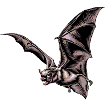Museum, University of Nebraska State

University of Nebraska State Museum: Mammalogy Papers
The Trade-Off between Tooth Strength and Tooth Penetration: Predicting Optimal Shape of Canine Teeth
Document Type
Article
Date of this Version
11-7-2007
Citation
Journal of Zoology (2007) 273: 273–280.
doi: 10.1111/j.1469-7998.2007.00325.x
Abstract
We investigate the shape of canine teeth under the assumption that the tooth’s morphology is optimized by the evolutionary trade-off to minimize breakage and maximize ease of the penetration of prey. A series of experiments using artificial teeth to puncture the hides of a deer Odocoileus virginianus and pig Sus scrofa domesticus were conducted to establish the relationships between the tooth shape and the force needed to puncture the hide. The shapes of these teeth were also used in a beam theory analysis to calculate the strength of the teeth. Because the relative costs of puncturing and breakage were not known, a complete prediction of tooth shape was not possible. Instead, we used two independent measures of tooth shape: aspect ratio (total tooth length/tooth width at base) and rate of taper along the shank of the tooth. We quantified rate of taper in several species of felids, and by assuming this was the optimal design, we determined the relative costs of breakage and puncturing that would produce such a taper. Then, we used the relative costs to predict the aspect ratio of the optimum tooth. The average predicted value is about 2.5, very close to the average value in extant species of cats.


Comments
Copyright © 2007, Freeman & Lemen; journal compilation copyright © 2007, Zoological Society of London. Published by Blackwell. Used by permission.